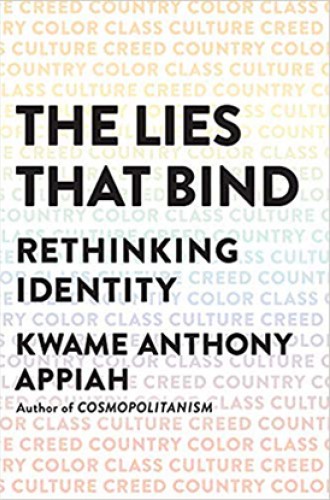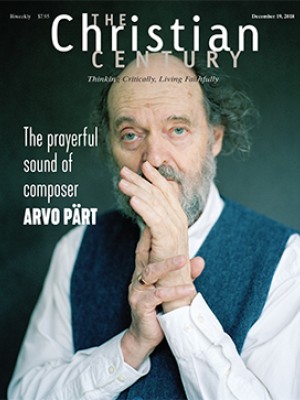All identities are intersectional
Identity markers are necessary, argues Kwame Anthony Appiah. They're also inadequate.
Asking myself the question “Who am I?” yields multifaceted answers: white, Christian, gay man, Midwesterner, New Yorker, American. Every identity comes with labels that matter, not just to those labeling and being labeled, but often to the law, always to our mores, and increasingly to our civic discourse. It is thus essential that we understand what we talk about when we talk about identity.
Kwame Anthony Appiah, a philosopher at New York University and author of the weekly Ethicist column for the New York Times Magazine, seeks to deconstruct notions of identity rooted in essentialism, the idea that “at the core of each identity”—whether creed, country, color, class, culture, gender, sexual orientation, politics, or any other marker—“there is some deep similarity that binds people of that identity together.” He observes that assumptions of similarity lead to hierarchies of status and unequal distributions of power, and much of his project lies in challenging these assumptions.
Read our latest issue or browse back issues.
Appiah draws from stories of his own life and family, as well as capsule biographies of Erik Erikson (the developmental psychologist who developed modern notions of identity in the wake of World War II), Anton Wilhelm Amo (who in 1734 became the first African-born man to earn a doctorate from a European university), Michael Young (the British sociologist who coined the term “meritocracy” in his 1958 dystopian novel The Rise of the Meritocracy), and others. Appiah shows not only the hollowness of essentialism but also its continued influence on our emotions, our politics, and our lives. In this critique, he focuses on five identity markers—creed, country, color, class, and culture—although he could have easily, albeit less alliteratively, focused on several others.
Creed, for instance, often suffers from the fallacy of scriptural determinism “which, in its simplest version, involves the claim that our religious beliefs repose in our sacred texts” and not in conversation with our practices. Determinism yields religious fundamentalists, those who “aim to defend and promulgate the One True Way.” It also yields critics of fundamentalism—one thinks of Sam Harris’s crusade against Islam—who “equate a religious identity with some fixed set of beliefs or some reading of its scripture.” This thinking even pervades those of us who consider ourselves to be more balanced. For instance, when we call nonfundamentalists moderate, Appiah suggests that we subconsciously suggest a watering down of belief rather than a belief, perhaps just as strong, that relies on interpretation and nuance.
More important than belief, Appiah asserts, is belief through practice, in which “an avowal of faith is a performance as much as it is a proposition.” Here, Appiah’s analysis could have been sharpened in conversation with the work of religious historians like Jaroslav Pelikan, whose scholarship on doctrines could deepen and provide context for Appiah’s claim that “religious identities, like all identities, . . . live in history.”
Appiah likely does not need to convince many of his readers to agree with his critiques of essentialism. But the implications of his critique, particularly his discussions of intersectionality and cultural appropriation, are challenging and thus bear more fruit.
Because essentialism is false, “having an identity doesn’t, by itself, authorize you to speak on behalf of everyone in that identity.” Rather, we are products of multiple markers of identity. Given the intersectionality that lies in each of us, those who share a particular marker of identity with us may have different experiences of that marker. So we should think twice before expressing an opinion by starting a sentence with “As a gay man” or “As an American” or “As a Christian.”
Moreover, because “cultural practices and objects are mobile,” they “are themselves creations of intermixture.” Thus, Appiah argues, we should not be concerned with who may appropriate aspects of others’ experiences in crafting a cultural identity; we should instead be concerned with how our cultural identity is crafted to ensure that cultural exploitation does not arise out of “disrespect compounded by power inequities.” Apart from giving egregious examples of ridicule by the privileged—think white college fraternities masquerading in cartoonish American Indian headdresses—Appiah does not, however, provide much of a guide for delineating the difference between exploitation and synthesis.
Ultimately, Appiah’s vision is existentialist: we are the identities that we construct, both individually and collectively. Even though we often think that we don’t choose our markers of identity, we do choose how to construct the narratives that shape who we are. Appiah’s portrayal of culture as “a process you join in living a life with others,” and of citizenship as a commitment “to sharing the life of a modern state, united by its institutions, procedures, and precepts,” holds true for other markers of identity.
With this freedom to shape who we are, however, comes an ethical duty to do so responsibly. This work is difficult, messy, and—ironically—countercultural. Platforms like Twitter and Facebook exploit instant gratification rather than sensitive discourse and thus, by design, thwart the ways in which we craft our identities in conversation with others. Despite these challenges, it is, ultimately, necessary work. The Lies That Bind is a learned and admirable contribution to a project not only for our lifetimes, but also for generations to come.







